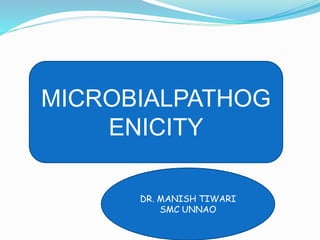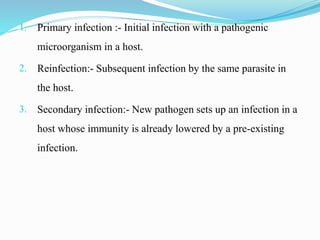This document defines key terminology related to microbial pathogenicity and discusses various concepts including:
1. It classifies microbes as saprophytes, parasites, commensals, and pathogens.
2. It describes the infection process and different types of infections such as primary, secondary, and nosocomial.
3. It explains mechanisms of microbial pathogenicity including routes of transmission, infective dose, evasion of host defenses, adhesion, invasion, and the role of toxins and pathogenicity islands.












































